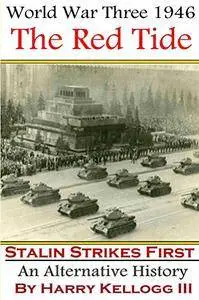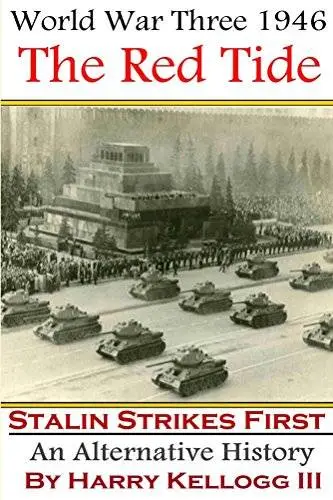World War Three 1946 by Harry Kellogg
English/Russian | 19 Aug. 2014 | ISBN: 1497358116 | 774 Pages | PDF | 10.27 MB
English/Russian | 19 Aug. 2014 | ISBN: 1497358116 | 774 Pages | PDF | 10.27 MB
World War Three 1946 – Book One – The Red Tide – Stalin Strikes First - An almost total re-write, including end notes that assist the reader down the path of a convincing, alternate history. An alternate history based on facts and logic.
***Warning: If you just can’t stand that thought that the USA might not win, then please don’t read this book series. It will be a cliff hanger until the end.***
* On the border of West Germany; Stalin has 60 mechanized divisions, composed of the battle hardened veterans.
* The US and Britain have demobilized their armies.
* Britain is bankrupt and rationing bread. Its empire is crumbling and its colonies are in revolt.
* Tens of thousands of USAAF and RAF planes have been dumped into the ocean, pushed into piles, crushed and left rotting in jungles around the world.
* Gangs of deserters roam the European country side.
* The US has entered a period of isolationism.
* The people of Europe are starving.
* The Germans are being brutally punished for their part in the war.
* The Soviet Union has acquired the major secrets of every strategic weapons system that the West has developed since 1935, including the atomic bomb. They have prototypes of every major German Wonder Weapon system produced since 1943.
* Greece, Italy and even France are in danger of turning Communist.
* The US and Britain have large Communist parties with thousands of sympathizers
* 90% of the industry in the US and Britain has been transformed from producing weapons, to consumer goods.
* Europe is in chaos and Capitalism has failed in the eyes of many.
These are facts, and this was the state of the world in May 1946.
This was the opportune time for Stalin to strike. This was his best chance of furthering the cause of Communism. This was his moment.
The Red Tide is the first in this series of fictional books. Alternate history explores the great “what ifs” of time. This is one of those great what ifs.
The ribbons of time start to unravel and diverge from ours in 1943. Slowly at first and then faster and faster until a fateful day in May 1946. The Soviets have stopped the production of the US atomic bomb by incapacitating the majority of the American program’s scientists. This systematic crippling of the US atomic program convinces Stalin that the time is right to fulfill his deepest ambitions and once and for all rid Western Europe of Capitalism.
We were able to obtain copies of many of the actual post war strategic plans of the US Joint Chiefs of Staff. Many of the strategies proposed in these works, were developed from these actual plans, and would have been in effect for much of the 1946-1948 era.
What if German designed jet fighters, jet bombers, rocket powered interceptors, super tanks, undetectable submarines, guided air to air and ground to air missiles were all in the hands of Joseph Stalin. The Wasserfall and the X4 missiles will sweep the skies clear. The V2 will strike without warning. A guided V1 will unerringly strike unsuspecting targets The Seehund will make the oceans unsafe once again. The Me 262, Me 163, He 162 and the AR 234 along with the Mig 9 and Yak 15 will duel with the Meteor and Shooting Star.
These books are not written in any traditional style but is a combination of historical facts, oral histories, third person and first person accounts. I was inspired by "The Good War": An Oral History of World War Two (1984 in literature|1984) by Studs Terkel and Cornelius Ryan's wonderful books "The Longest Day" and "A Bridge too Far".
There is no hero or character development. The story is the story and not the characters. We hear from those who felt, saw, ran, lost and won as well as from officials and historians. The story is told using the techniques of reporters, oral historians, historians and politicians. Although told in a short stories, vignettes and in an episodic manner, the novel builds on what has gone before.



